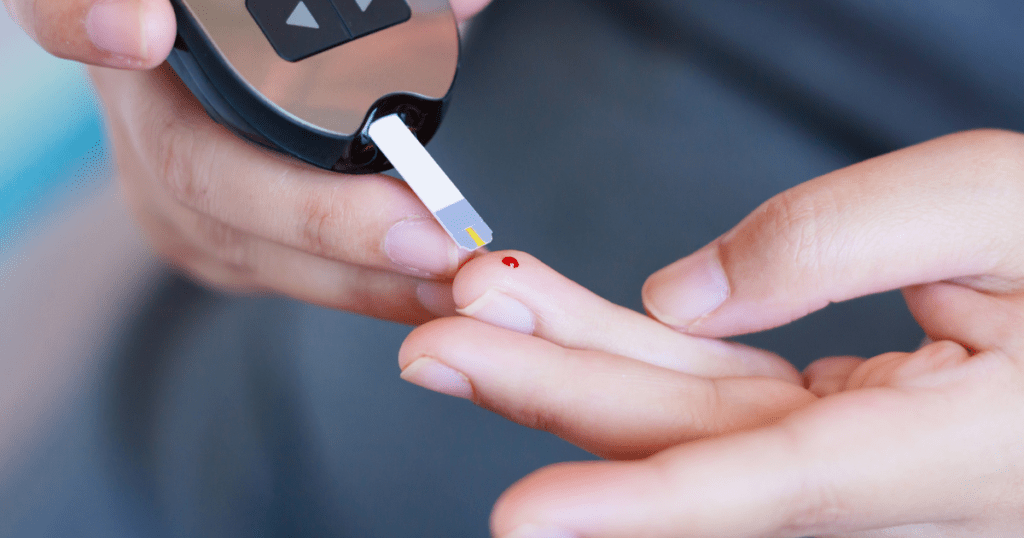Understanding Type 2 Diabetes: Causes, Symptoms, and Prevention
Coping with Type 2 Diabetes: Lifestyle Choices for Better Health
When the body’s mechanism to use and regulate sugar as a fuel is weakened, it results into type 2 diabetes. This malfunctioning results in an excessive amount of circulation of sugar in the bloodstream of the body. This high blood sugar level in the body can create other problems for the immune, circulatory and nervous systems.
Primarily it happens due to two factors. First, when the pancreas stops producing enough insulin, which helps regulate the movement of sugar into cells, and second, due to malfunctioning of cells, they do not respond to insulin. This, in turn, results in excessive sugar in the blood. The high level of accumulation of sugar in the bloodstream causes other health problems such as heart disease or stroke.
While there is no cure for type 2 diabetes, a healthy lifestyle – exercises, controlling weight, and a proper diet can considerably prevent and control the disease.
Although type 2 diabetes is more prevalent among adults, children too are affected with type 2 diabetes due to unhealthy eating habits and a sedentary lifestyle.
According to Cleveland Clinic, it is estimated that 1 in 10 Americans are likely to suffer from type 2 diabetes. “It’s the 7th leading cause of death in the U.S.”, Cleveland Clinic reveals.

World Health Organization (WHO) provides alarming statistics on the global scenario related to diabetes. The number of people affected with diabetes was 108 million in 1980; in 2014, the figure went up to 422 million. “More than 95% of people with diabetes have type 2 diabetes”. In 2019, diabetes-related death was 1.5 million. Nearly 460,000 people died due to kidney-related problems associated with diabetes.
Causes of Type 2 Diabetes
Primarily, there are two leading causes of type 2 diabetes.
- Sedentary lifestyle and obesity
- Defective genes due to which cells do not function normally.
Symptoms
Type 2 diabetes usually develops gradually. Symptoms of type 2 diabetes include but are not limited to the following:
- Increased hunger
- Fatigue
- Weight loss
- Frequent urination
- Feeling thirsty
- Tingling or numbness in the hands or feet
- Slow healing of wounds or sores
- Frequent infection
Role of Insulin
Pancreas release a hormone in the form of insulin. Insulin plays a vital role in regulating the sugar level in the body.
How do High Blood Sugar Levels Impact Your Body?
High blood sugar levels due to type 2 diabetes results in:
- Hearing impairment
- Kidney disease
- Eye-related problems
- Ulcers in legs and foots
- Liver problem
- Chances of stroke
- Digestive problems
- Gum disease
- Heart disease, high blood pressure, narrowing of blood vessels
- Sexual dysfunction
- Sleep apnea
- Dementia
- Slow healing of cuts and blisters
Glucose and Its Role
Glucose is a primary source of energy for the cells, contributing to muscles and tissue building. The sources of glucose and its role are as follows:
- There are two primary sources of glucose – food and human liver
- After entering into blood, glucose enters into cells with the support of insulin
- Glucose is formed in the liver. If the body’s glucose levels go down due to a long food intake gap, the liver transforms stored glycogen into glucose to maintain adequate glucose levels.
With the increase in blood sugar levels, the pancreas releases more insulin. This results in cells malfunctioning; consequently, they can’t produce the desired quantity of insulin to fulfill the body’s requirements.
What Factors Contribute to Type 2 Diabetes?
Several factors contribute to developing type 2 diabetes which includes the following:
- Sedentary lifestyle – physically active people have fewer chances of developing type 2 diabetes because physical activities help maintain a healthy weight and convert glucose into energy.
- Obesity – obesity or being overweight is one of the significant risk factors
- Fat accumulation – fat accumulation in the abdomen creates a more significant risk.
- Age – the risk of developing type 2 diabetes increases as a person ages, especially after 35.
- Genes – If someone in the family has type 2 diabetes, the chances of developing type 2 diabetes increase.
- Blood lipid levels – If high-density lipoprotein (HDL) or good cholesterol level is low, and levels of triglycerides are high, this increases the chances of type 2 diabetes.
- Race – studies show that people of certain races and ethnicity, such as Hispanics, Asians, Native Americans, and Blacks, are more prone to developing type 2 diabetes.
- Dark patches on the armpits and neck indicate insulin resistance.
How to Prevent Type 2 Diabetes?
A healthy lifestyle can considerably reduce the chances of developing type 2 diabetes, even if it runs in the family. Some of the management strategies include the following:
- Physical activities – Spending about 150 or more minutes a week pursuing moderate to strenuous activities such as brisk walking, swimming, bicycling, or running is recommended.
- Eating healthy food – The Mediterranean diet, food with high fiber, low fat, and calories such as whole grains, fruits, and vegetables.
- Maintaining and monitoring weight – watching and maintaining body weight can delay the chances of developing type 2 diabetes.
- Avoid long sittings – Long sittings can increase the chances of developing type 2 diabetes. It is good practice to stand up after every 30 minutes interval and move around.
For in-depth knowledge, read Smart Blood Sugar
References:
Cleveland Clinic. Type 2 Diabetes. (https://my.clevelandclinic.org/health/diseases/21501-type-2-diabetes). Accessed December 11, 2022
Mayo Clinic. Type 2 Diabetes. (https://www.mayoclinic.org/diseases-conditions/type-2-diabetes/symptoms-causes/syc-20351193). Accessed December 9, 2022
World Health Organization (WHO). Diabetes. (https://www.who.int/news-room/fact-sheets/detail/diabetes). Accessed December 13, 2022
Category
- Health Issues (70)
- Healthy Diet (46)
- Herbs for Health (11)
- Mental Health (32)
- Skin Care (20)

